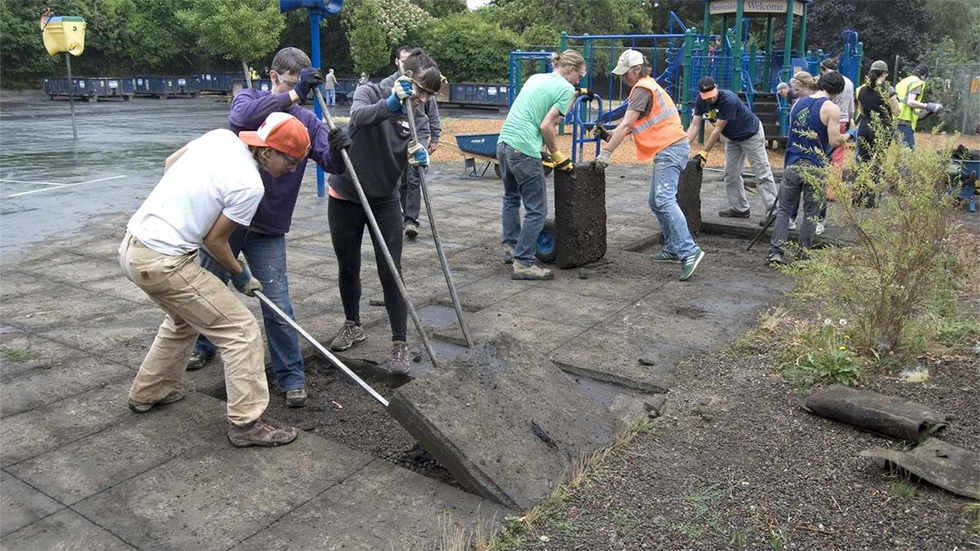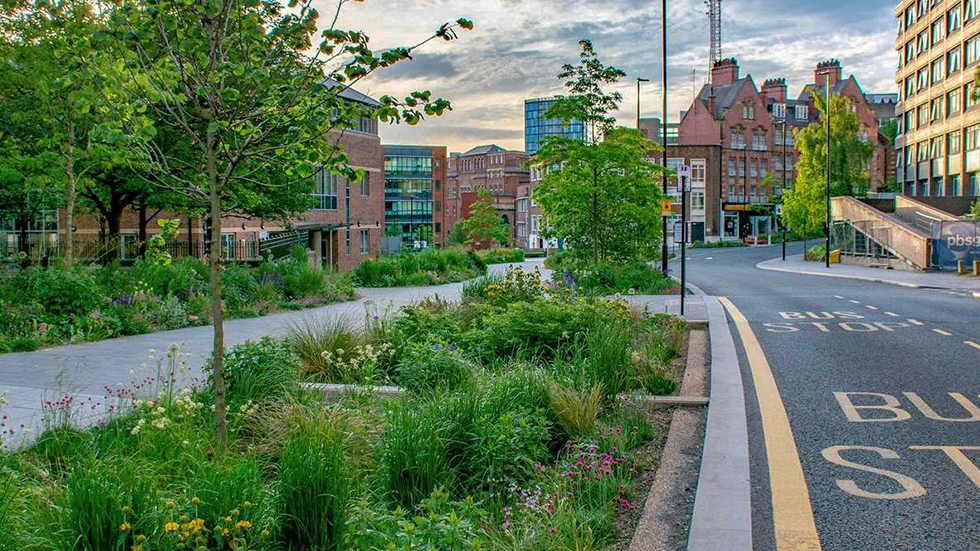Depaving
https://www.bbc.com/mundo
INFORMATION Environment
https://amja.es/
The idea of depaving or “despavimentar” is simple: replace as much cement, asphalt or other forms of urban construction with plants and soil. It is the dream of bringing nature back to us, instead of keeping it further and further away.
Since 2008; when Depave was founded, they have been responsible for lifting as much cement as possible in the city of Portland. The creators of this program maintain that depaving allows the water that falls in cities to be absorbed by the earth and, in this way, avoid flooding and excessive heat. Indeed, studies have shown that impervious surfaces such as cement increase the risks of flooding in urban areas. Efforts in Portland have resulted in nearly 83 million liters of rainwater being diverted annually from entering the city's drainage system. Depaving also allows wild plants to grow in urban space and, by planting more trees, more shade can be produced, which in turn protects city dwellers from solar radiation and heat waves.
On our side, in Europe some cities have begun to consistently depave. London residents, for example, are being invited to reclaim green in the soil of their gardens.
In France, depaving is also gaining momentum. 540 million euros have been allocated to urban ecology projects, which include the removal of pavement and the installation of green roofs and vertical gardens, that is, the planting of garden areas on both facades and rooftops. All of this, with the aim also of combating heat waves, which are also increasingly frequent in this country.
In the Paris region, a 45,000 square meter paved area of asphalt and concrete has been removed from a former parking lot. After unpaving the area, the land is being naturalized to optimize its ability to absorb rainwater.
In Belgium, the city of Leuven says it is embracing the idea of large-scale depaving. Their objective is that the land can be used to plant gardens or green areas. The plans involve removing a significant volume of asphalt from residential areas and forcing cars to share the road with pedestrians and cyclists. The project leader estimates that in 2023 alone, the removal of 6,800 square meters of cement allowed 1.7 million liters of water to be absorbed by the earth.
A great example of balance between the built city and its relationship with parks and green areas is Berlin where 50% of the city is green. More than any European city. In addition, it is committed to continuing to reduce CO2 emissions year after year, until they have lost 80% of their impact.
Of course, for pavement removal to be a critical component of urban planning, it requires a commitment that goes far beyond the enthusiasm of volunteers.
Fortunately, cities and regions around the world are beginning to integrate depaving into their climate adaptation strategies, recognizing not only its ecological but also social value.
The question now is whether the authorities of our cities are aware of this or continue to believe that "depaving" is a marginal activity or is the path we must take to solve part of our vulnerability to drought.
Sheffield, UK: “drained” green belt.
A walk through Milan (Italy), before and after / AGENCIAS
Citizens of Portland (USA) unpaving a park / DEPAVE


